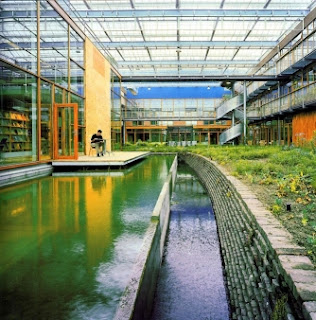Concrete plans for a one-way ticket to Mars have been forged. Food will have to be grown on location.
Wieger Wamelink, ecologist at Alterra Wageningen UR, will be researching whether or not it is possible to grow plants on the moon.
We have been to the moon several times.
Next time, we may go back for a considerable period and concrete plans for a one-way ticket to Mars have already been forged.
Will plants survive in Martian soil or moon dust? This question was initially prompted by Dutch plans to establish a colony on Mars.
As the plan does not include a return trip, the basic necessities would have to be satisfied on location. "Mars is still a long way off," says Wieger Wamelink, explaining his plans.
"But the moon is closer, so it would be more realistic to establish a colony there. What's more, we already know the mineral composition of the soil on the moon, and of moon dust. "
"So what I'm aiming to find out now is whether plants will grow in moon substrate, or whether certain essential elements are lacking. "
"This has never been done before. We are gradually discovering more about Mars, which is why the planet has been included in this research."
Wamelink's research will compare the requirements of certain species of plants with the mineral composition of the soil on the moon and Mars.
Alterra has a database that can analyse 25 abiotic preconditions per species and calculate whether a plant species will survive or not.
The database also stores information about heavy metals and minerals, although as yet, there are no fixed preconditions for these elements.
Using this data, he will be able to determine which plant species would theoretically be capable of growing in moon dust or Martian soil.
Wieger Wamelink: "We will then allow certain species of wild plants and agricultural crops to germinate in pots of artificial moon and Martian soil supplied by NASA.
"The growth of these plants will be compared with that of the same species in ordinary soil from the Earth. Preconditions relating to heavy metals and minerals will be derived from our findings. "
"Our research is based on the premise that an atmosphere will be available to the colony, perhaps in domes or buildings. "
"We are also assuming the presence of water, either from the moon or Mars or transported from Earth. The plants would produce oxygen and recycle carbon dioxide, ultimately creating a kind of ecosystem."
At a later stage, Wamelink also wants to look into the food safety of agricultural crops grown in human-made conditions on the moon in moon soil. The first trial crops will be planted in greenhouses on 2 April.
Wieger Wamelink, ecologist at Alterra Wageningen UR, will be researching whether or not it is possible to grow plants on the moon.
We have been to the moon several times.
Next time, we may go back for a considerable period and concrete plans for a one-way ticket to Mars have already been forged.
Will plants survive in Martian soil or moon dust? This question was initially prompted by Dutch plans to establish a colony on Mars.
As the plan does not include a return trip, the basic necessities would have to be satisfied on location. "Mars is still a long way off," says Wieger Wamelink, explaining his plans.
"But the moon is closer, so it would be more realistic to establish a colony there. What's more, we already know the mineral composition of the soil on the moon, and of moon dust. "
"So what I'm aiming to find out now is whether plants will grow in moon substrate, or whether certain essential elements are lacking. "
"This has never been done before. We are gradually discovering more about Mars, which is why the planet has been included in this research."
Wamelink's research will compare the requirements of certain species of plants with the mineral composition of the soil on the moon and Mars.
 |
| Alterra Holland |
The database also stores information about heavy metals and minerals, although as yet, there are no fixed preconditions for these elements.
Using this data, he will be able to determine which plant species would theoretically be capable of growing in moon dust or Martian soil.
Wieger Wamelink: "We will then allow certain species of wild plants and agricultural crops to germinate in pots of artificial moon and Martian soil supplied by NASA.
"The growth of these plants will be compared with that of the same species in ordinary soil from the Earth. Preconditions relating to heavy metals and minerals will be derived from our findings. "
"Our research is based on the premise that an atmosphere will be available to the colony, perhaps in domes or buildings. "
"We are also assuming the presence of water, either from the moon or Mars or transported from Earth. The plants would produce oxygen and recycle carbon dioxide, ultimately creating a kind of ecosystem."
At a later stage, Wamelink also wants to look into the food safety of agricultural crops grown in human-made conditions on the moon in moon soil. The first trial crops will be planted in greenhouses on 2 April.








No comments:
Post a Comment